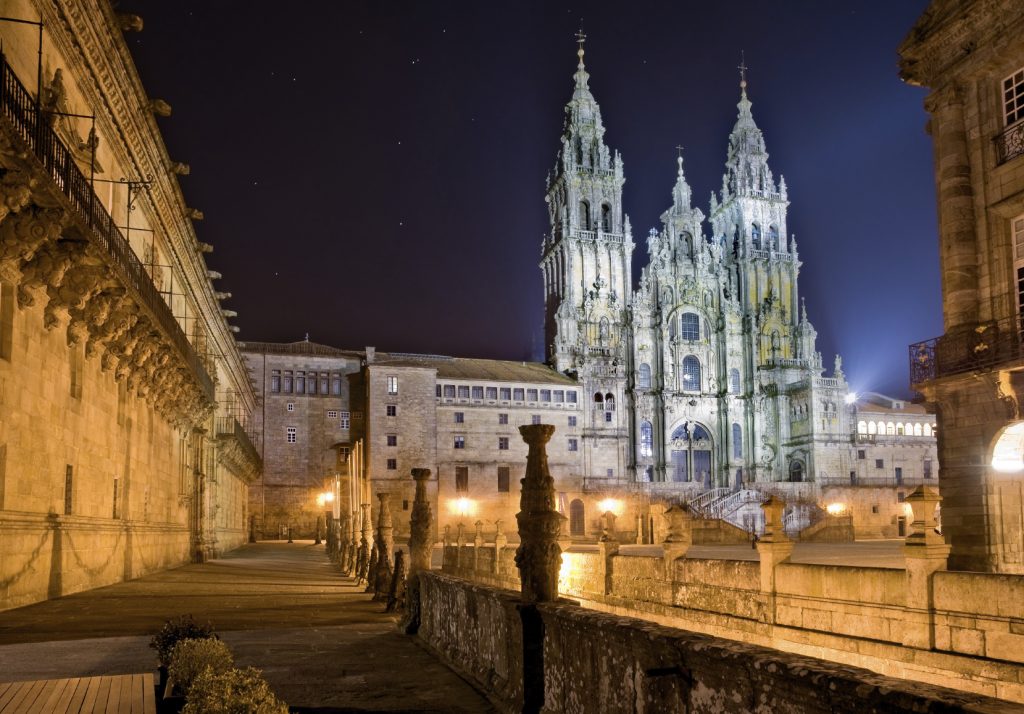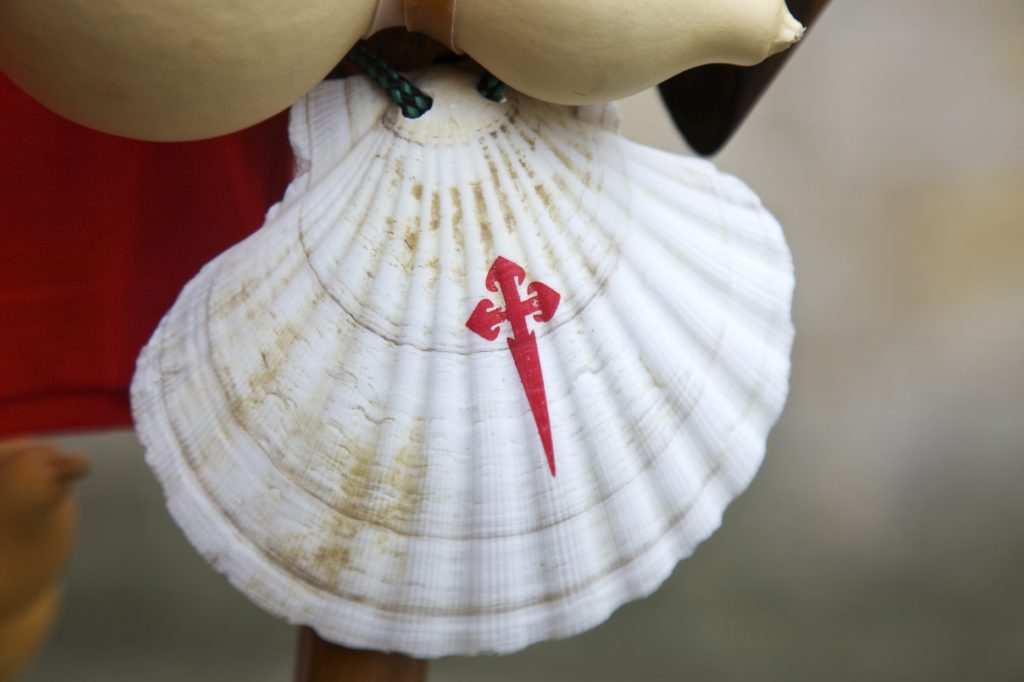The road
The Camino de Santiago is a route used by pilgrims from all over Spain and across Europe to reach the city of Santiago de Compostela, where the relics of St. James the Greater venerate. Throughout laEdad Media was busy, It was then slightly forgotten and in modern times it has become to a great boom. The Camino de Santiago has been declared by UNESCO World Heritage Site; European Cultural Route by the Council of Europe and has received the honorary title of High Street in Europe.

Historical beginning of the road
The origins of the cult of Santiago in Roman Hispania are unknown, but it seems that in the year 828 relics attributed to the Apostle were found. At the end of the 9th century extends by Christian Europe. In the 11th century the number of pilgrims increased considerably thanks to cultural contacts between European Nations.
Alfonso II King of Asturias, He had built a church on the site that, According to the legend, They lie the remains of St. James the Apostle. From the 11th century, This church became one of the main centres of Christian pilgrimage and gave rise to the Camino de Santiago. In this way expanded on the Peninsula new architectural styles that succeeded in Europe.

Home of the pilgrimage
Approximately from 813 with the finding of the relics of the apostle and the deCarlomagno welcome, I wanted to defend their borders of Arab invasions, Compostela will progressively become a pilgrimage centre that will receive its definitive boost during the first half of 12th century. Coming soon, the news spreads throughout the Europacristiana and pilgrims begin to arrive at the grave, He called Campus Stellae, which degenerate in the term Compostela.
Menendez Pidal thought that in some sense can be considered to the Muslim caudillo Almanzor as the great reviver of the Way and who brought her international fame.[citation] Indeed, repeated attacks of Almanzor on the Spanish Christian kingdoms got to trouble the monks of the Benedictine Abbey of Cluny, at that time the most important centre of European Christianity. Religious linked to Cluny develop the Codex Calixtinus and compostelana History and the Spanish kings in every possible favor the constitution and projection of a network of Cluniac monasteries in northern Spain and singularly around the Way. This policy is closely related to the desire of the Spanish monarchs of breaking his isolation from Christianity through dynastic ties, cultural and religious.
Many of the first pilgrims came from regions of Europe pioneering in the contribution of your music. Based on some of the North and others of more central areas of France, they had passed through places of worship, as Chartres and Tours. There they heard melodies throughout the Christian West considered the true legacy of Pope Gregory. It mattered little that those who came from northern Italy and had to cross the Alps yPirineos told them that in their place of origin the liturgical rite was older and venerable than that to which they called Roman.

Not matter much once into Hispanic territory, and gathered the pilgrims from different places around a path, make a stop in a Riojan monastery and there they speak them, not without nostalgia, a liturgy that not long ago was the unifying element against the armies of Allah who for centuries occupied a good part of the Hispanic lot.
In these Riojan and Castillian monasteries still look askance at those walkers heading to Campus Stellae. Precisely following this route had entered the main enemy of the Hispanic rite. By the Pilgrim the ancient ceremonies and customs were contaminating so that those who came from remote regions could understand something of cult listening. So much so, before the unifying wishes of Alfonso VI, it abolished the indigenous rite for the benefit of the so-called Roman Liturgy.
